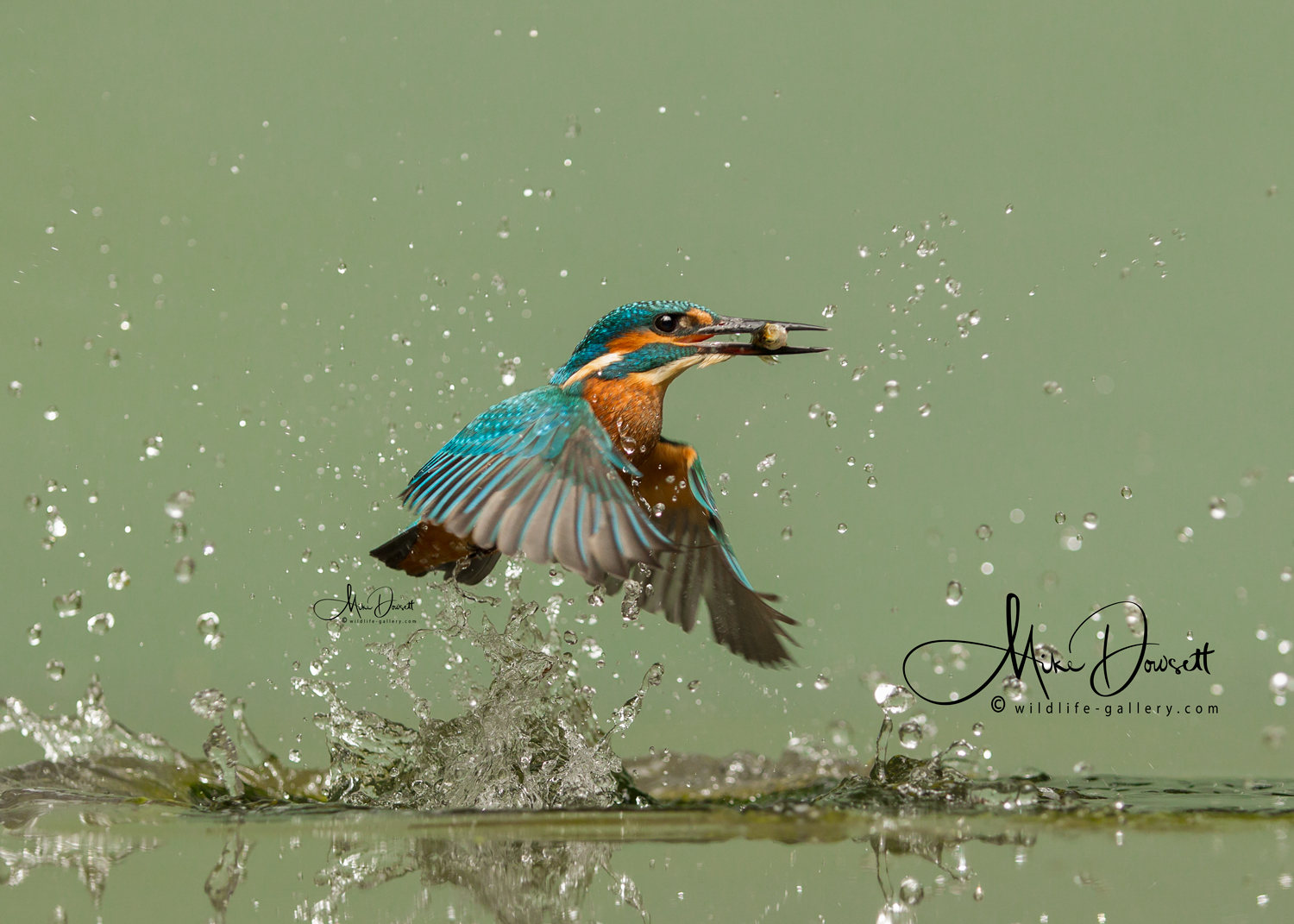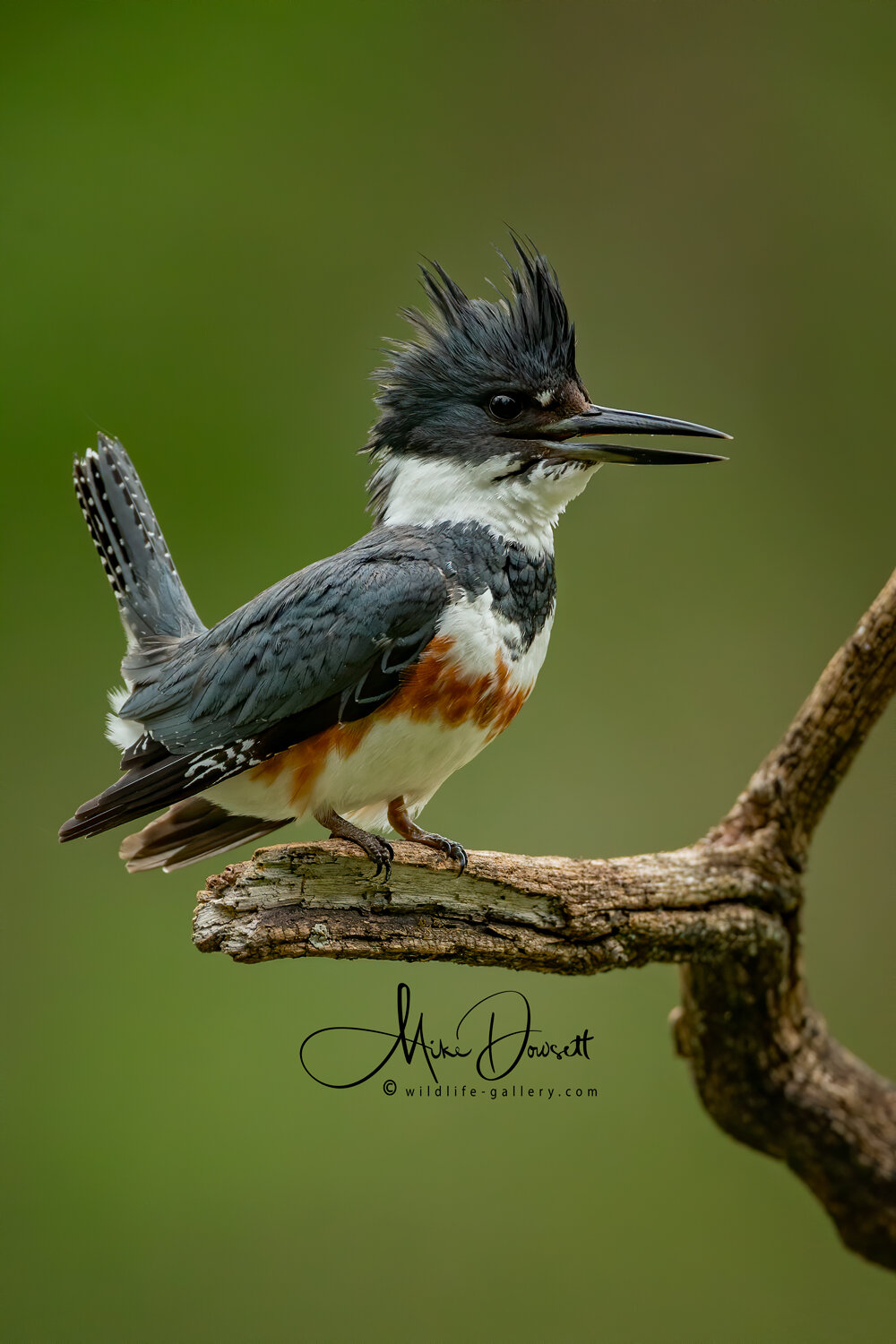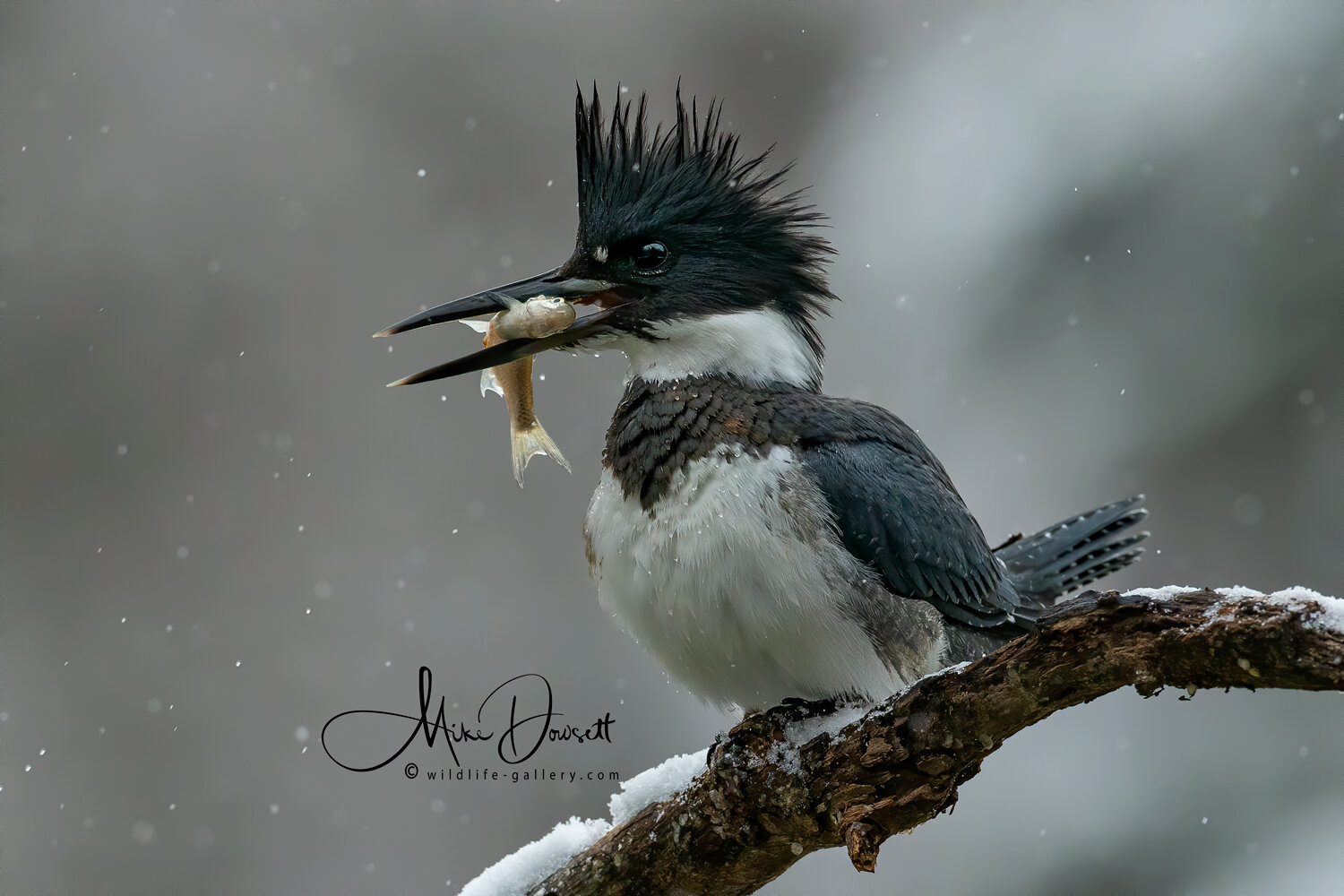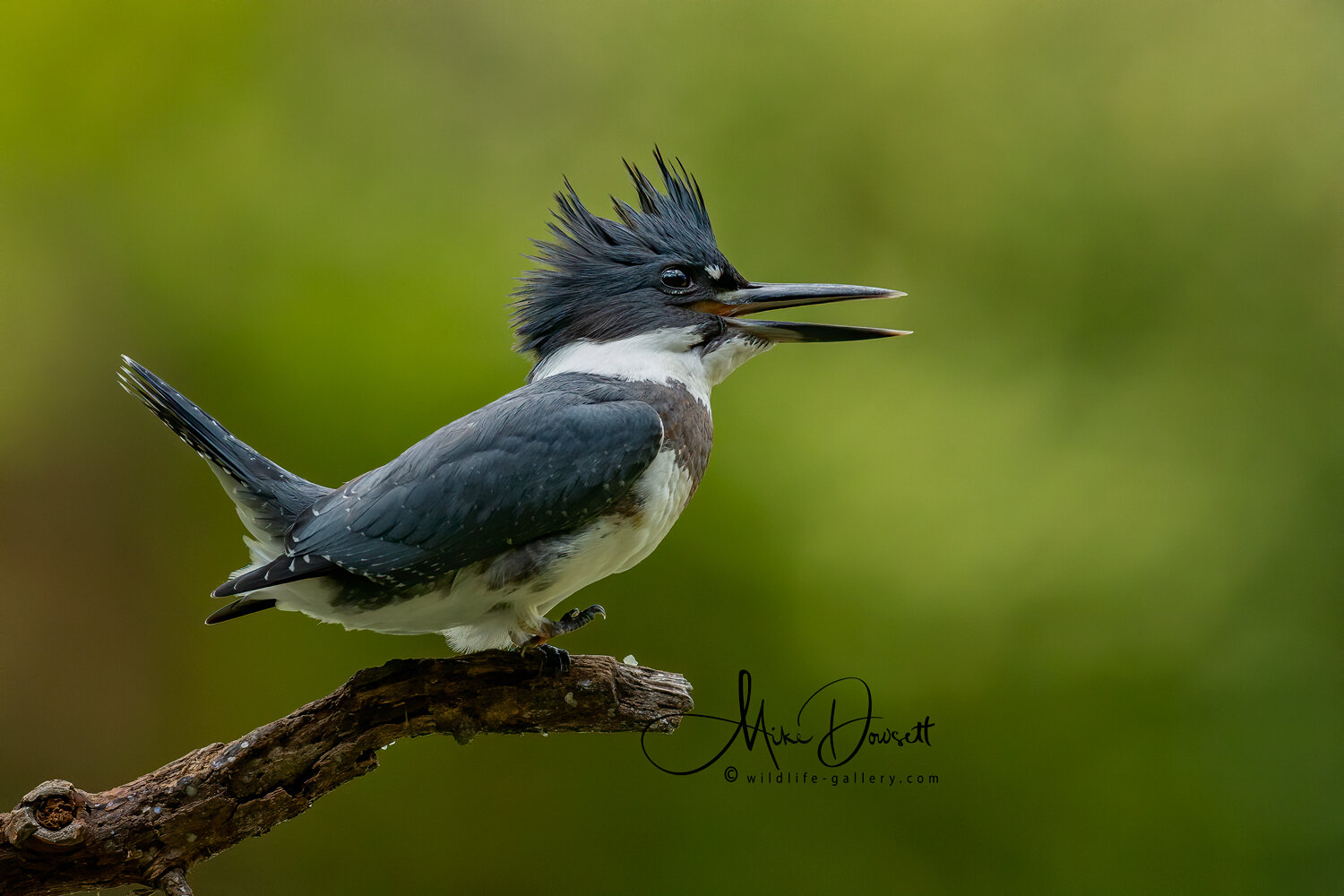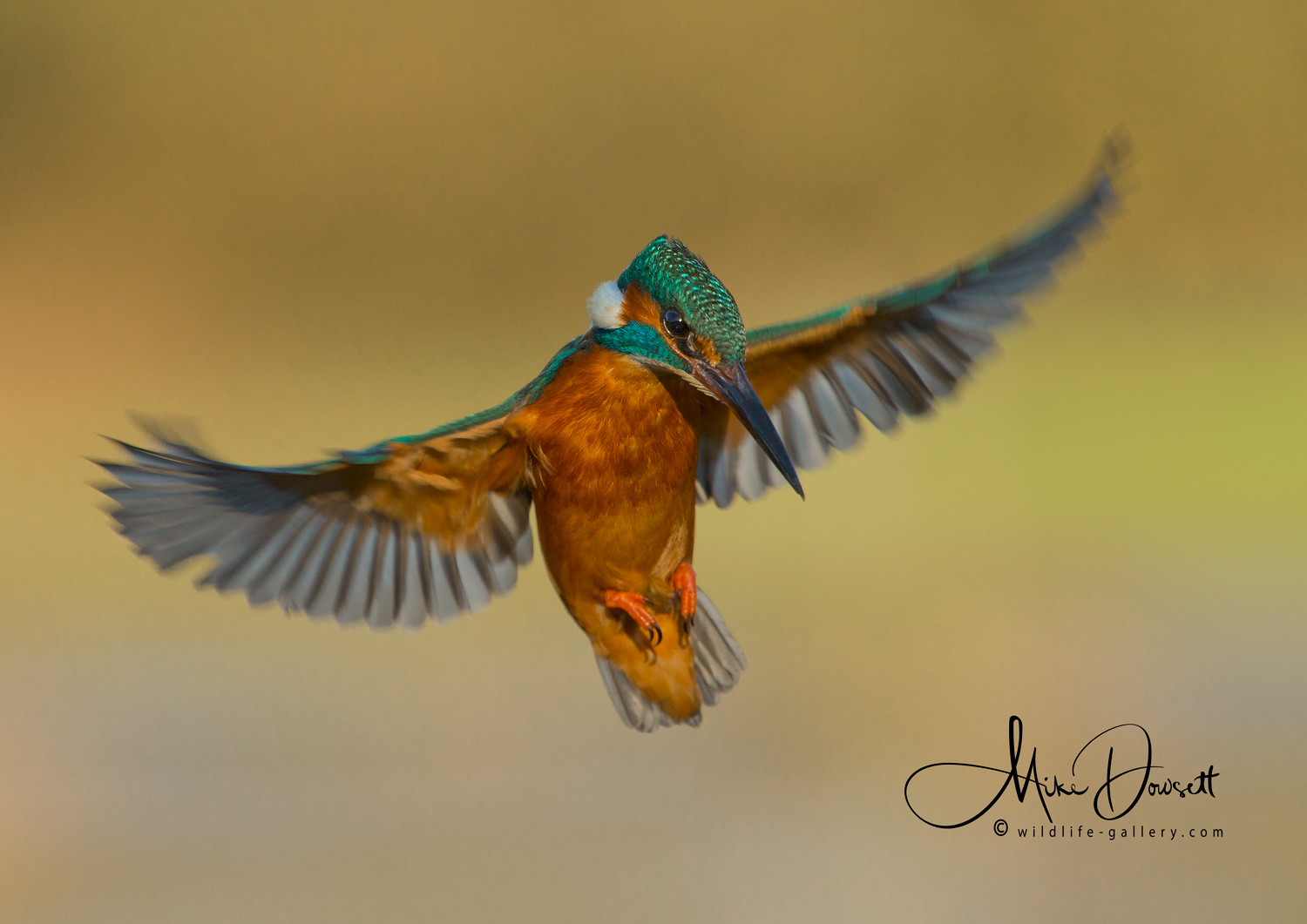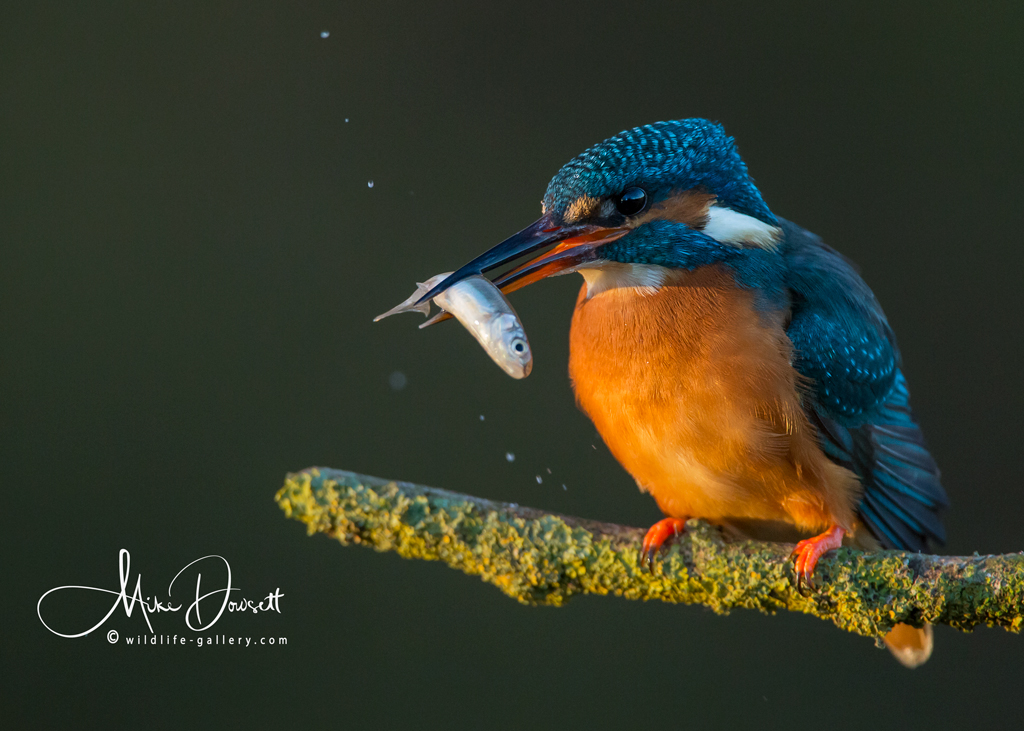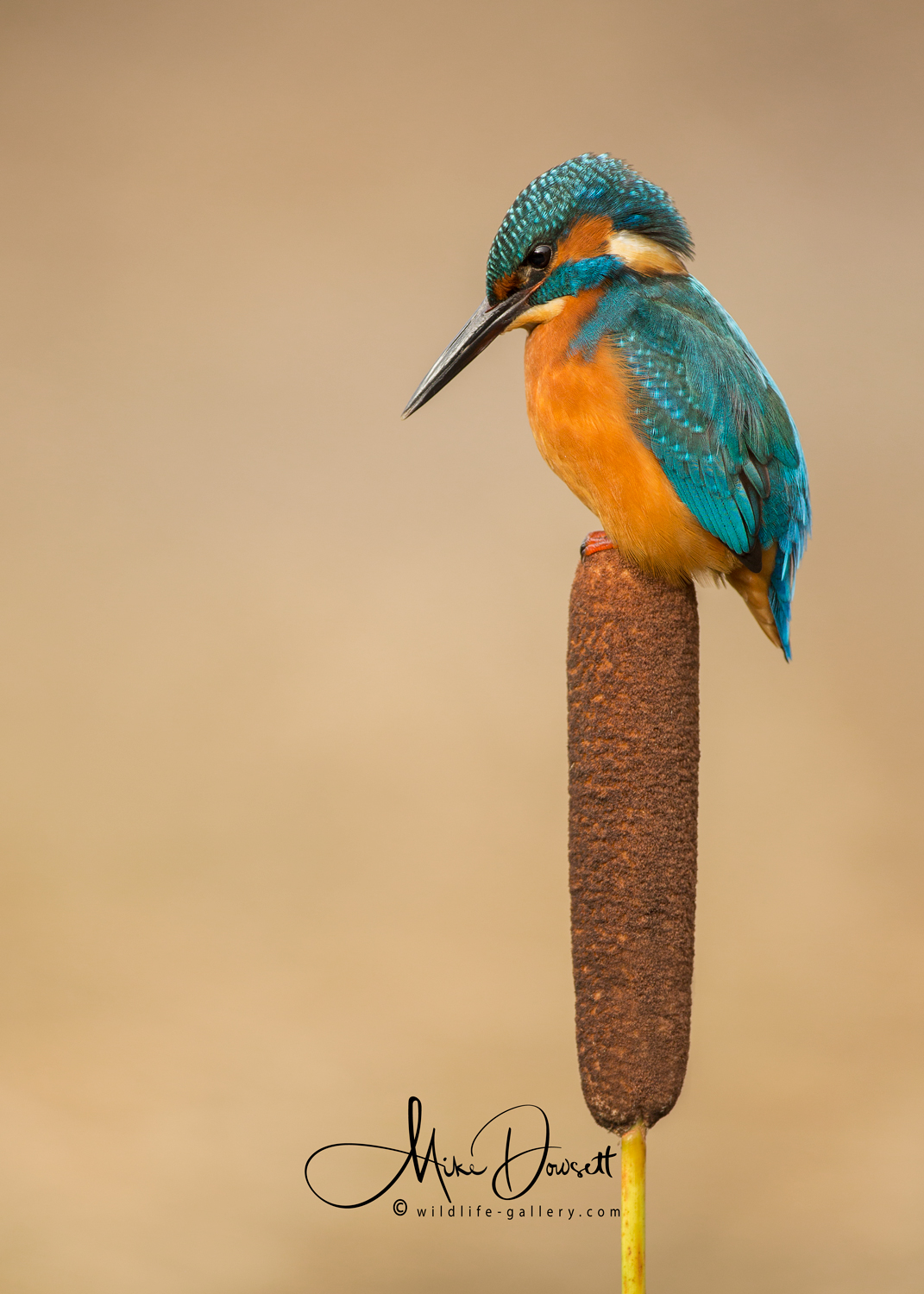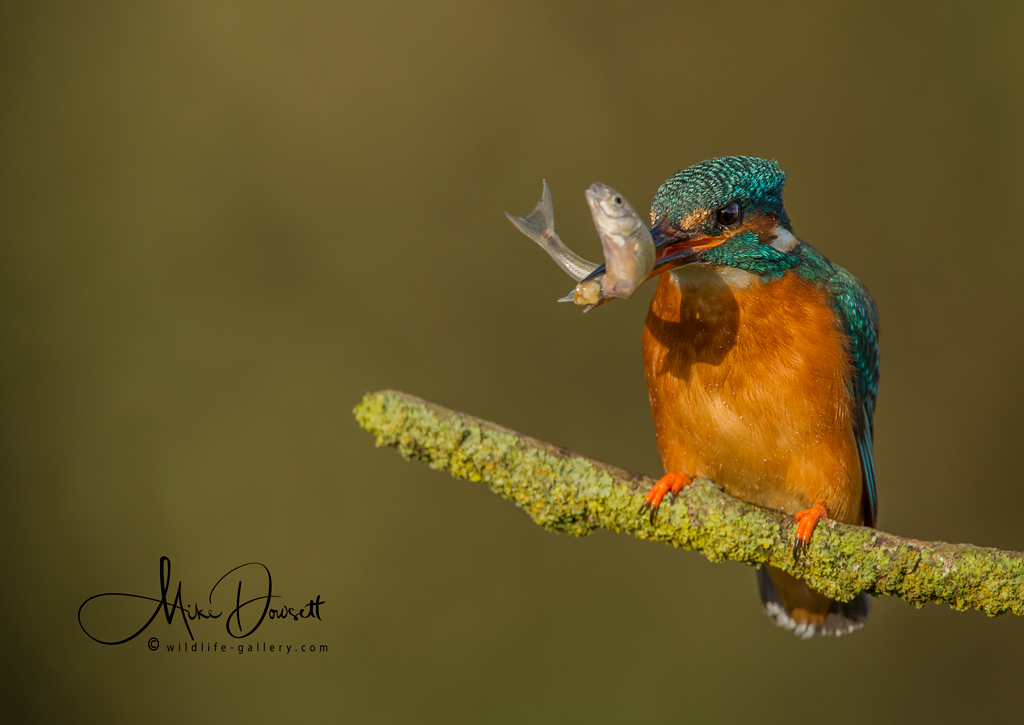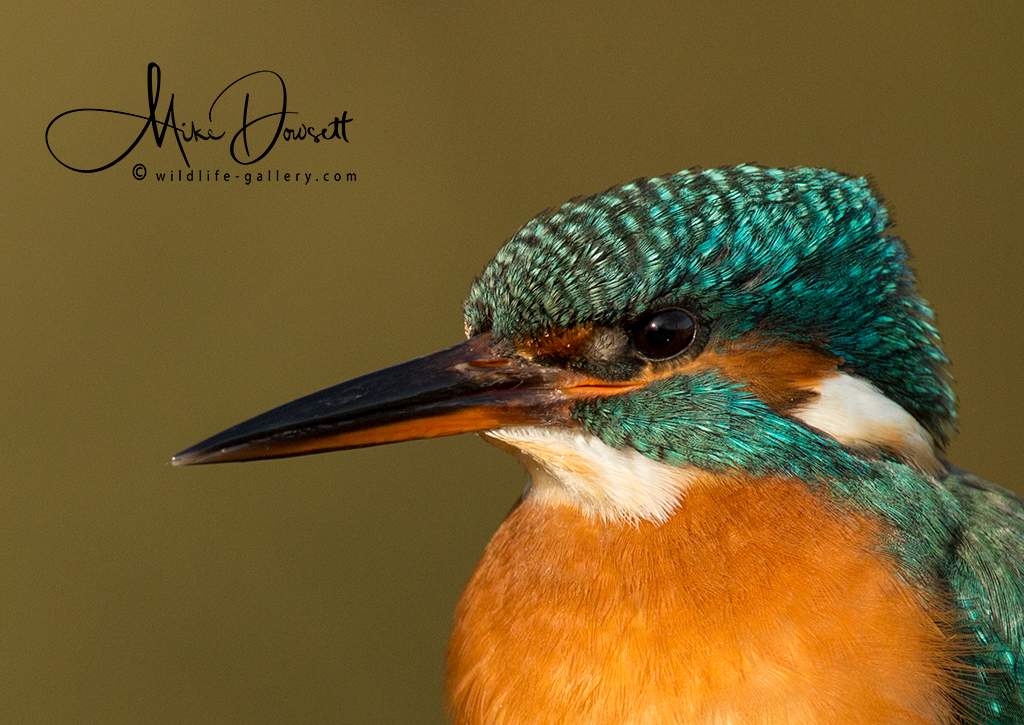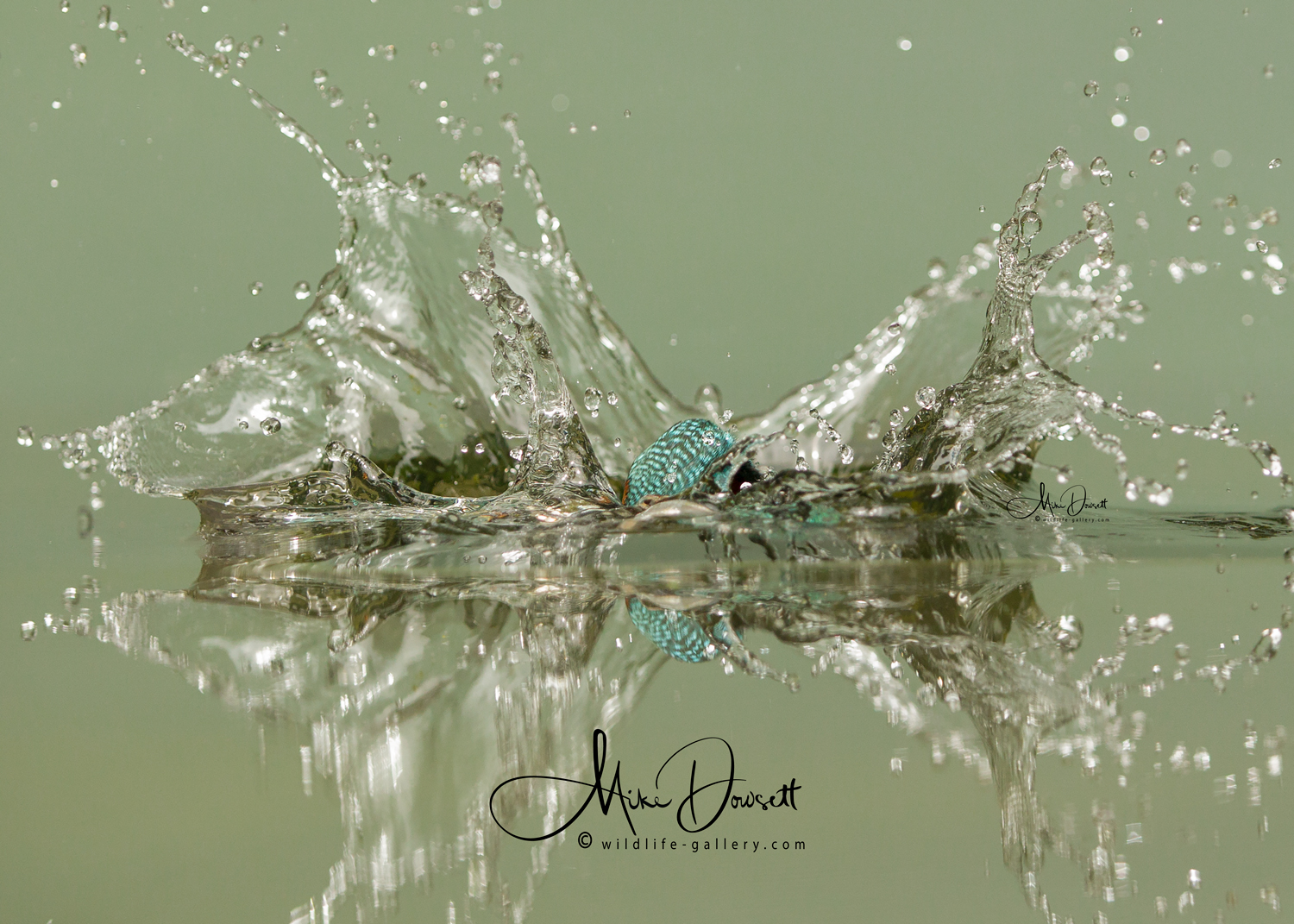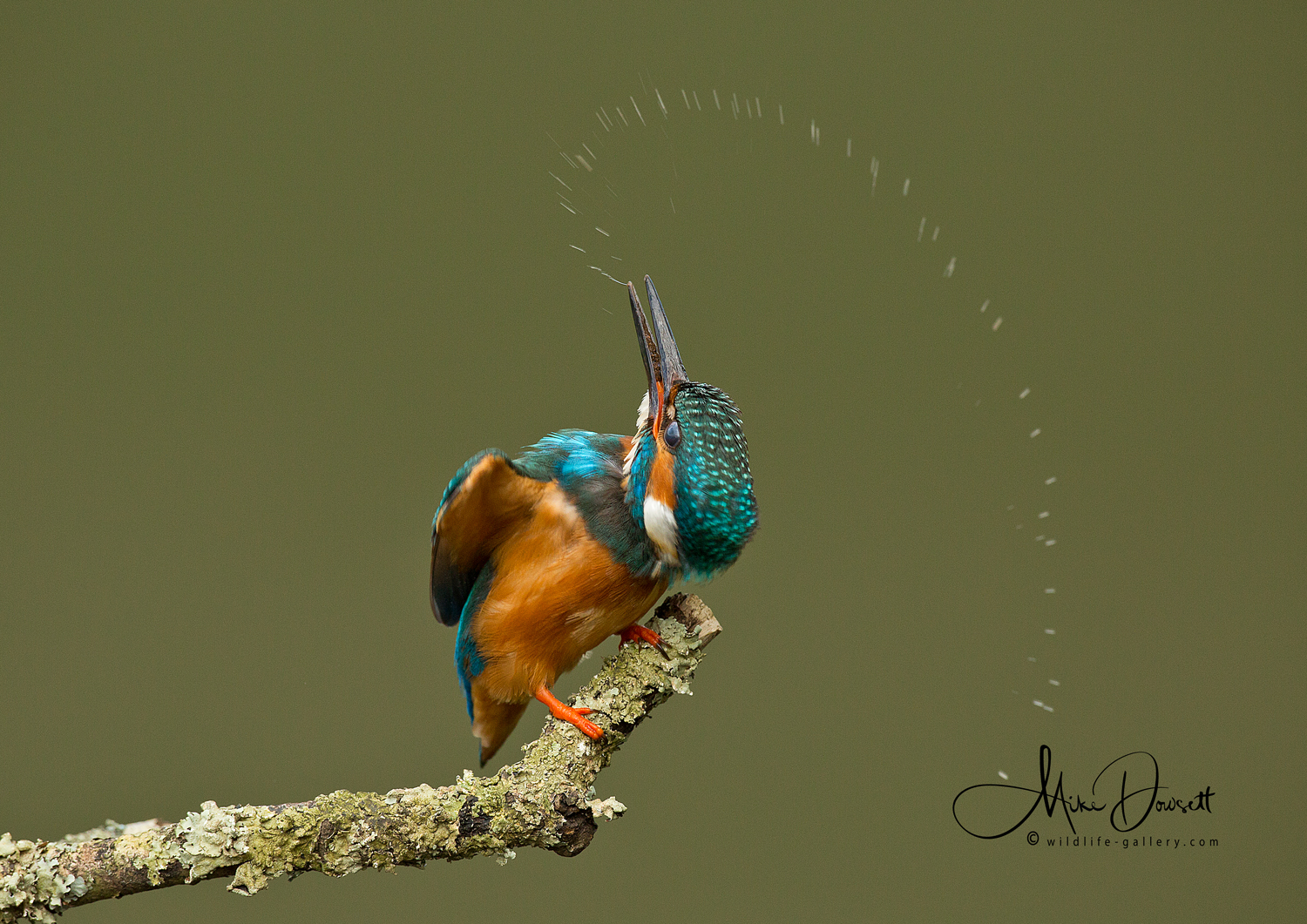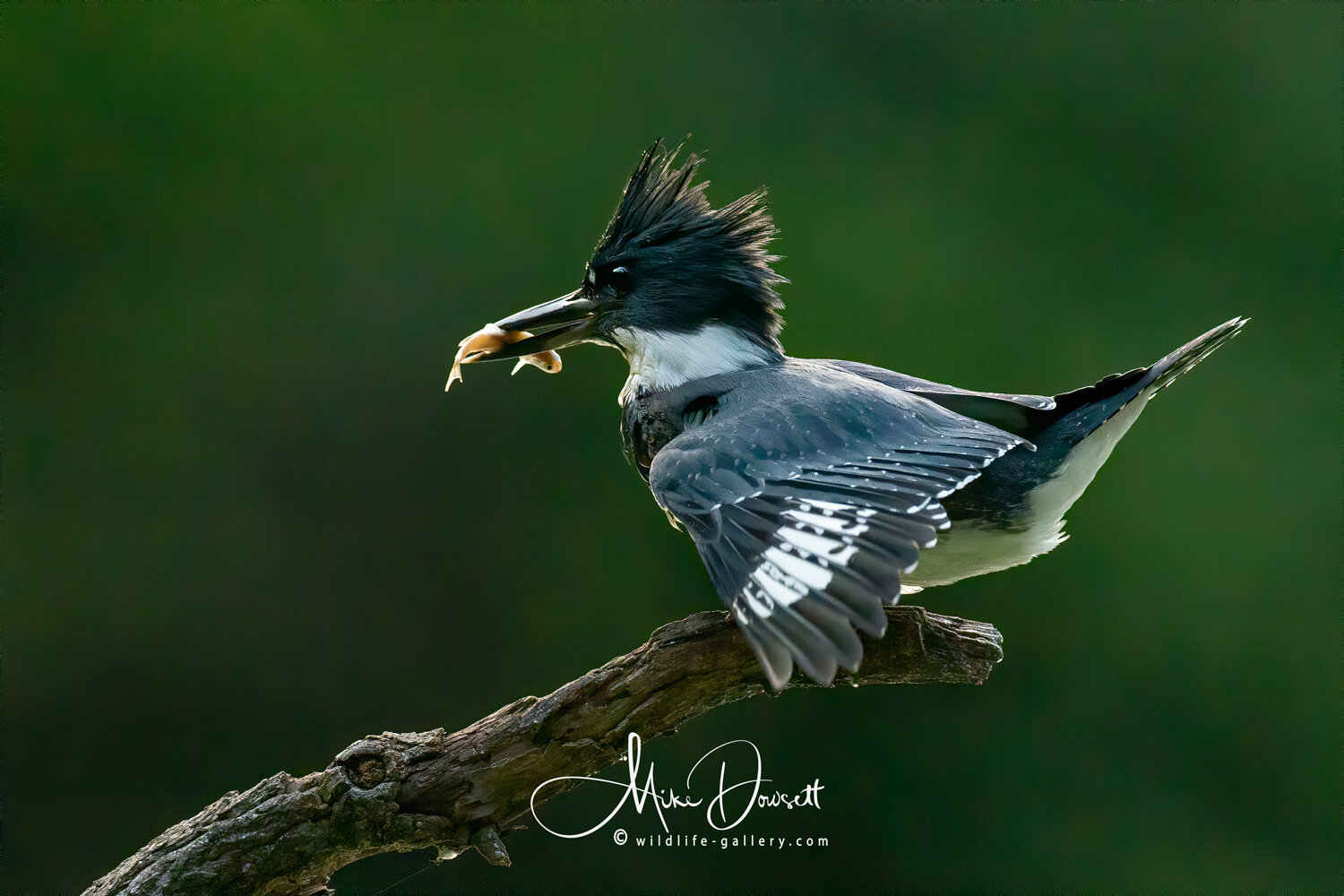The Kingfisher Gallery, by Mike Dowsett
© The copyright for all images on this website is owned exclusively by Mike Dowsett. Do not copy or reproduce without prior permission. ©
Both the North American Belted Kingfisher and the European Common Kingfisher are shown below. A video is at the bottom of the page.
Portrait of a beautiful male Belted Kingfisher, taken in the Fall of 2020, in Grass Lake Michigan
* PLEASE CLICK ON ANY THUMBNAIL IMAGE BELOW TO ENLARGE *
It may take a few seconds to fully load due to the file size
The North American Belted Kingfishers are a mid-sized solid looking bird with a large head and active crest on its head. Mostly blue grey in color with a white chest and white dots on the tail and the wings; the underside of the wings are predominantly white and grey. The female has an additional band of rusty coloring around her chest/tummy. The most obvious and dominating feature is a large thick, black pointed bill. The bill has small serrations on the inside to help hold the wriggling fish and prevent escape. Like most Kingfishers, the legs are very short and are not really used for walking: Movement is best described as hoping rather than walking.
Both the male and female Belted Kingfishers are circa 12 in long, with a wingspan around 22 in; this is around 3 times bigger than the EU Kingfisher described below.
Belted Kingfishers spend a lot of their time perched in trees along the edges of streams, and waterways hunting for small fish. It is common for these birds to remain stationary on a perch above water for 30-40 minutes following a few successful dives. The Belted Kingfishers dive head-first into the water and take their prey with an open bill, either diving from a perch or also from a hover. An abrupt ‘about-turn’ from the water and then into flight usually follows within 1 second. Small fish such as minnows are swallowed quickly; but larger fish and those with spikes such as perch or sticklebacks are bashed repeatedly against a tree limb or platform, to aid the swallowing process. These Kingfishers are frequently heard flying around bodies of water letting out a distinctive loud rattling call. You usually hear a kingfisher, before you see it !
The European Common Kingfisher (Alcedo atthis) are a small distinctively vibrant blue and orange bird that can be found flying very fast and low over water. Kingfishers hunt fish from riverside trees and perches. Occasionally (as can be seen in the gallery above) the Kingfisher can dive for fish from a hovering position, usually 1-2m above the water surface.
Kingfishers prefer slow moving streams/rivers and ponds, although can be found near any waterway that can supply plenty of small fish in water depths of up to 2m.
Kingfishers are susceptible to hard winters and habitat destruction through pollution or poor watercourse management. Kingfishers are amber listed in the UK because of their conservation status in Europe. They are also listed as a Schedule 1 species under the Wildlife and Countryside Act which offers them additional protection.
The biggest UK predator of Kingfishers are 1. Brown Rat, 2. Mink and 3. Stoat, however as mentioned above, a ‘harsh winter’ that freezes slow moving streams and ponds for several weeks, takes more Kingfishers lives than any predator group. Lifespan for UK Kingfishers is up to 7 years, although many never make their 5th Birthday.
Kingfishers primarily eat fish and prefer to eat small fish 5-12cm in length. Minnows and sticklebacks are a favorite food, but all ‘live’ fish of the correct size will be taken and swallowed whole. The fish must be swallowed headfirst to prevent choking.
Surveys have determined that a Kingfisher would need to eat on average 18-20 small fish every day to survive. Many more must be caught during the breeding season, when the male will have to catch enough fish for the chicks and the female.
Apart from fish, Kingfishers will eat most aquatic insects and amphibia such as frogs and also small crayfish.
Keywords: Kingfisher, High Quality British Kingfisher flying, Kingfisher in flight, catching fish, Fishing, Hovering, Kingfisher with a fish, in flight, on a perch, exploding from the water with a fish, Alcedo atthis, Common Kingfisher, diving, Female, Male, bashing a fish, about to dive, BIF, birds, birding, nature, wildlife, high quality photographs, detailed photos, best pic, nice images, detailed, Belted Kingfisher US,







